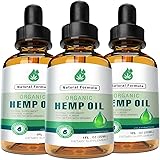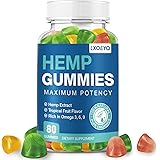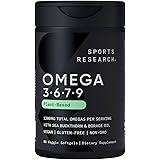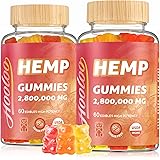Imagine a world where the natural compounds found in plants could alleviate chronic pain, soothe anxiety, and even combat serious illnesses, all while being clearly understood and safely regulated. For many, the complex terminology surrounding cannabis-derived products—such as cannabis, hemp, CBD, and THC—has created a barrier to exploring these potential benefits. As insightfully discussed in the accompanying video, unraveling these terms is crucial for anyone seeking to understand the medicinal properties of cannabis and hemp.
A clear distinction must first be established between cannabis and hemp, and subsequently between CBD and THC. These are not interchangeable terms, and understanding their differences is fundamental to appreciating their unique therapeutic profiles and legal statuses.
Deconstructing Cannabis and Hemp: A Foundational Understanding
The term “cannabis” refers to a plant species known to produce various chemical compounds called cannabinoids. Among these, tetrahydrocannabinol (THC) and cannabidiol (CBD) are the two most prominent, each contributing distinctly to the plant’s overall effects. Conversely, hemp is a specific variety of the cannabis species, legally defined by its exceptionally low THC content.
Specifically, to be classified as hemp in the United States, the plant must contain 0.3% THC or less. This minute amount is considered insufficient to induce any psychoactive effects, meaning there is no possibility of experiencing a “high.” This critical distinction directly impacts the legality and application of hemp-derived products, particularly CBD.
CBD vs. THC: Understanding the Key Cannabinoids
Within the cannabis plant, CBD (cannabidiol) and THC (tetrahydrocannabinol) represent the primary active compounds. While both interact with the body’s endocannabinoid system, their mechanisms of action and effects are notably different. THC is recognized for its psychoactive properties, binding primarily to CB1 receptors in the brain, which leads to the characteristic euphoric sensation associated with marijuana.
Despite its psychoactivity, THC possesses significant medicinal benefits. It is frequently prescribed for conditions involving severe nausea and vomiting, particularly for patients undergoing chemotherapy, where it also serves to stimulate appetite. Furthermore, THC is acknowledged for its potent analgesic properties, effectively managing various types of pain, including neuropathic pain, sciatic discomfort, and muscle spasticity observed in conditions like Multiple Sclerosis. Its utility extends to addressing chronic insomnia, offering a profound sense of relaxation that can facilitate restful sleep.
Conversely, CBD is non-psychoactive, meaning it does not produce the “high” associated with THC. This compound is renowned for its broad spectrum of therapeutic applications. CBD is often utilized as a powerful anti-inflammatory agent, providing relief for conditions such as joint inflammation and other inflammatory responses throughout the body. It is also increasingly recognized for its anxiolytic effects, assisting many individuals in managing anxiety and reducing reliance on traditional anxiolytic medications. Beyond these, CBD functions as an effective analgesic for pain management and acts as a robust antioxidant, supporting overall immune system health and cellular protection.
The Legal Landscape and Quality Control of Hemp-Derived CBD
The legal status of hemp-derived CBD has undergone significant evolution, notably with the signing of the Farm Bill. This landmark legislation effectively legalized hemp at the federal level, removing it from the Controlled Substances Act’s Schedule I classification. Consequently, CBD derived from hemp, containing less than 0.3% THC, is now legal in all 50 states and can be purchased online and through various retail channels.
However, with this newfound legality, concerns regarding product regulation and quality control have emerged. The market for hemp oil and CBD products, akin to the supplement industry, has historically lacked stringent oversight. This regulatory gap has led to a proliferation of products that may not contain the advertised cannabinoid profile, or worse, may be contaminated with undesirable substances. Imagine purchasing a product for its purported health benefits, only to discover it contains pesticides, heavy metals like lead, or mold, absorbed from the soil during cultivation. Such contaminants pose significant health risks and undermine consumer trust.
Therefore, the importance of robust regulation cannot be overstated. Consumers are advised to seek out products that have undergone third-party lab testing. This independent verification ensures that the product’s cannabinoid content is accurate, and that it is free from harmful contaminants. Information regarding extraction methods, such as CO2 or ethanol extraction, can also provide insight into the purity and quality of the final product. The method of extraction significantly influences the integrity and safety of the CBD oil, with CO2 extraction often preferred for its clean and efficient process.
Expanding the Medicinal Benefits of Cannabinoids
The therapeutic potential of both CBD and THC extends across a wide range of conditions, often addressing needs where conventional treatments fall short. As an anti-inflammatory, CBD can serve as a natural alternative to NSAIDs like ibuprofen, mitigating discomfort with potentially fewer side effects. Its role in anxiety management is particularly noteworthy, providing a calming effect that may help individuals reduce their dependence on benzodiazepines.
Furthermore, the antioxidant properties of CBD contribute to overall wellness by combating oxidative stress, a key factor in the development of chronic diseases. It is considered a wellness supplement that may support the body’s natural ability to maintain homeostasis, particularly as our natural production of endocannabinoids declines with age. This perspective suggests that CBD could become a staple in daily health regimens, much like a multivitamin.
When considering THC, its medicinal scope is profound. Beyond its well-known efficacy in pain management and appetite stimulation, research indicates powerful anti-cancer properties. The United States government, in fact, holds a patent acknowledging THC’s ability to induce apoptosis, or programmed cell death, in cancer cells. This means THC has the potential to help shrink tumors and decrease metastasis, offering a significant avenue for oncological support. Moreover, its anti-spasmodic effects make it highly beneficial for patients experiencing severe muscle spasms, often associated with neurological conditions.
Integrating Cannabinoids into Wellness Practices
The integration of cannabinoids into daily wellness practices is a burgeoning field. For general well-being, CBD is increasingly recommended to support the body’s endocannabinoid system, which plays a crucial role in regulating various physiological processes, including mood, sleep, appetite, and immune response. Imagine our bodies having a natural internal system designed to maintain balance, and CBD acting as a supportive element to this intricate network.
For individuals facing specific symptoms such as chronic anxiety, persistent pain, or difficulty sleeping, CBD can be administered in targeted doses or through specific routes to maximize its therapeutic impact. While CBD offers significant relief for many, THC remains a critical option for those requiring more potent effects, especially for severe pain or profound sleep disturbances when CBD alone proves insufficient. The medicinal benefits of cannabis and hemp are thus seen as complementary, offering a spectrum of solutions tailored to individual needs.











